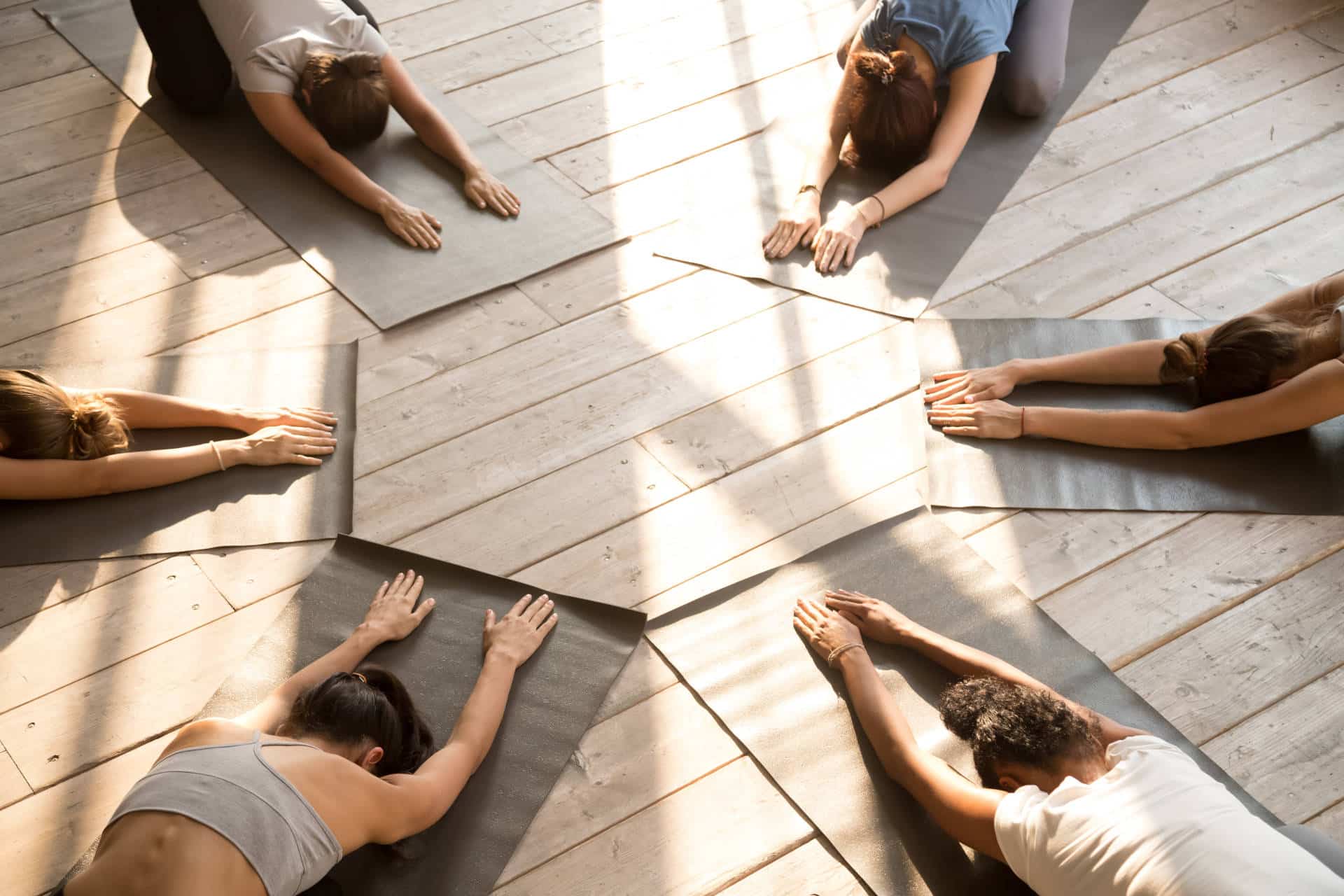I am often asked by students and yoga professionals alike for a list of the best yoga poses for grief. We all agree that physical symptoms of grief add insult to injury, and know that yoga can help reduce the stress reaction, which in turn will quiet your mind and soothe your spirit. The physical sensation of stretching will give your mind somewhere to focus other than on intrusive thoughts about the past and future.
There is certainly a short list of yoga poses that I use most often when working with a grieving body – be it my own or someone in a class – but it is important to recognize that each of us have our own unique reaction to loss. I may be an expert on yoga, meditation and grief, but you are the expert of your own body, so do not let this list limit you. Any yoga pose that reduces your physical and emotional suffering is a good yoga pose for grief.
Yoga After Loss
If you are already practicing yoga, you may find that your asana practice will shift and change after a major loss. Give yourself permission to practice in a way that will serve you – approaching each posture with a child’s mind – as though it were your first time experiencing the yoga pose.
If you are new to yoga, (and for that matter if you are an experienced yogi or yogini), follow the first instruction of yoga, non-violence to yourself or to others – known as ahimsa. If you maintain awareness with your breath during the practice you will know if you are pushing yourself to hard. Your breath should be easy, like a metronome. If you find that you are holding your breath back off of the pose and honor your edge. This is true whether you are grieving or not.
It can be hard to start or return to a practice when your world has been turned upside down, so don’t beat yourself up if you find yourself unmotivated. You may wish to seek out a yoga teacher for a private lesson or schedule a private Phoenix Rising Yoga Therapy session to receive compassionate support.
There can be a tendency to want to run away, and returning your awareness back to your body might be bittersweet. When you approach your mat for the first time during acute grief you may want to set a timer for as little as five or 10 minutes. Commit to being on the mat for that period of time, even if you don’t do anything that looks like yoga. This will help you take the first step towards self-care.
How we are on the yoga mat is often a metaphor for how we are in our life. Grief can be sloppy and messy. When you decide to return to your yoga mat, your first practice may just be curling up on your side and crying. If you bring mindfulness to your experience, I would argue you can call that yoga.
Restorative Yoga Poses For Grief
When the physical and emotional symptoms of grief are acute, I recommend the practice of restorative yoga. Blankets and props support you in the posture so instead of holding yourself up, you can sink into the experience. Restorative yoga will allow you to relax and focus on your breath, and will help activate the relaxation response, the antidote to stress.
Each of the following five postures can be practiced for 5 to 20 minutes each. I like this series because there is a progression of closed to open.
- Supported Child’s Pose
- Supported Twist
- Supported Bridge
- Reclining Bound Angle Pose
- Legs Up The Wall
Traditional Yoga Poses For Grief
Many of us experiences grief in our heart and lungs, so I have selected postures that support the Heart (Fourth) Chakra. If you experience grief in other parts of your body you may find other postures helpful. Honor your experience, and make this practice your own by adding warm-up postures in the beginning.
- Cobra Pose
- Child’s Pose
- Camel Pose
- Eagle Pose
- Warrior 2
End With Savasana: The Ultimate Yoga Pose for Grief
Savasana, also known as corpse pose, is the reason many people return to yoga class after their first experience. I call this the “ultimate yoga pose for grief” because it is the ultimate yoga pose for stress, and grief is the greatest stress most of us will face. Savasana allows our body and mind to integrate the yoga practice. It invites mindful stillness. All you have to do is lie down and receive the gift of yoga.


